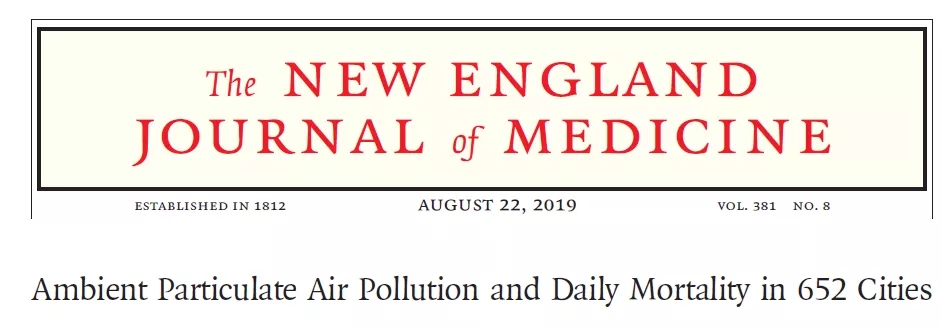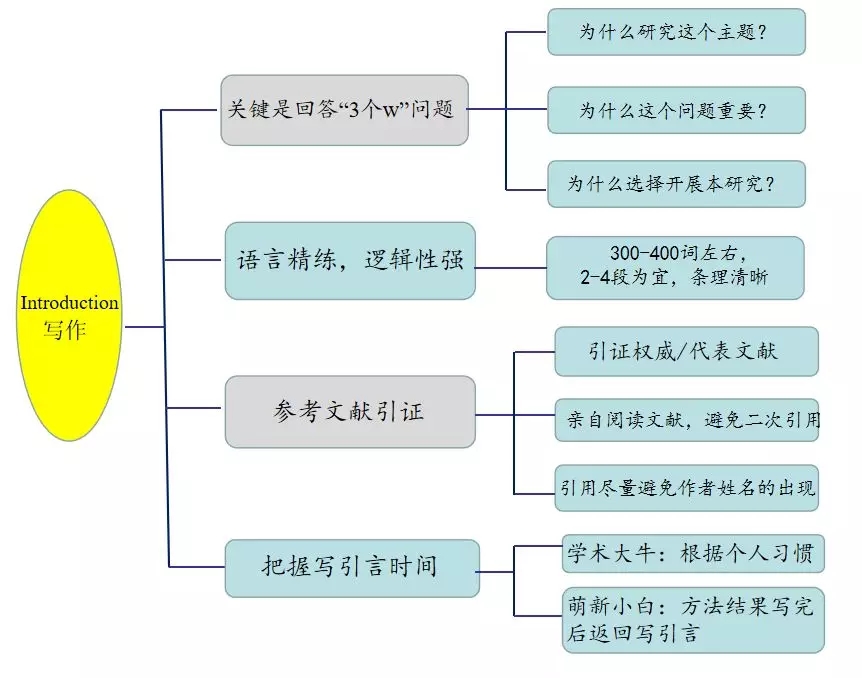以 NEJM 文章为例,亲授 4 个 SCI 引言写作小技巧!
引言是一篇 SCI 论文的开场白,作者的知识储备,研究的目的和价值都在 Introduction 中充分体现。一个精彩的引言,可以助力文章的发表。
然而,如何写好 SCI 论文中的引言呢,本文以 2019 年 8 月发表在 NEJM上文章为例,给大家分享一些策略。

图片来源:NEJM
eg:
The adverse health effects of short-term exposure to ambient air pollution are well documented.1 - 3 Particulate matter (PM), especially, arouses public health concerns because of its toxicity and the widespread human exposure to this pollutant.
简述研究的背景信息,一般可从疾病的定义,流行病学,病因学,诊疗手段,预后等方面入手;语言凝炼,用一到两句话简介。
PM, which includes inhalable particles with an aerodynamic diameter of 10 μm or less (PM10) and fine particles with an aerodynamic diameter of 2.5 μm or less(PM2.5), is emitted from combustion sources or formed through atmospheric chemical transformation.
Given the extensive evidence regarding their effects of health, the daily and annual mean concentrations of PM10 and PM2.5 are regulated according to the World Health Organization (WHO) Air Quality Guidelines4 and standards in major countries
简介待研究的因素/对象的背景知识,即为什么要研究这个问题,引起读者关注,并过渡到后文。
Numerous time-series studies have examined the associations between short- term PM exposures and daily mortality.
常见套路「为什么这个研究问题重要?」,通过引证之前的文献,过渡到本研究的主题,建立研究方向和目标疾病的逻辑关联。
However, most evidence has been obtained from studies in single cities, regions, or countries, and there are challenges in comparing these results and in synthesizing effect estimates because of different modeling approaches and potential publication bias.
用了一个 However, 话锋一转,概述前人研究还存有哪些不足(there are challenges...),为提出本研究的目的做铺垫。
These limitations can be addressed by performing international, multicenter studies that adopt the same analytic protocol and model specifications to estimate globally representative associations of PM10 and PM2.5 exposures with daily mortality.
承接上文,上述提出的问题可能的解决方案,引出本研究的目的和意义,也侧面回复了「研究问题的重要性」。
We established the Multi-City Multi-Country (MCC) Collaborative Research Network to perform a global assessment of the effects of weather or climate on mortality.
回答「为什么选择开展本研究」,基于建立的研究方案/设计来回答需要解决的科学问题,明确研究目的。
This network allowed us to examine and compare the associations of PM concentrations with daily all-cause, cardiovascular, and respiratory mortality at the global, regional, and country level with the use of a standardized analytic framework.
再次阐明研究目的和研究价值。
小结下 SCI 论文的引言写作技巧和套路:
1、关键是回答「3 个 W」问题
SCI 的引言写作,关键是解决好「3 个 W」问题。这 3 个 w 问题也恰恰对应了引言内容的三个部分。
第 1 个 w:「为什么研究这个主题?」即引入相关领域,介绍背景信息。
第 2 个 w :「为什么这个问题重要」,即在概括和引证前人的研究同时,挖掘出研究不足/缺陷,为提出本研究目的做铺垫。
第 3 个 w:「为什么选择开展本研究」,即明确开展本研究的目的和价值所在。
2、语言需要精练,逻辑性强
Introduction 基本要求需要条理清晰,言简意赅。用凝练的语言,表述研究课题的来龙去脉。一般 SCI 该部分控制在 450 字以内,以 300 - 400 词为宜。通常分 2 - 4 个自然段,切记不要详述众所周知的问题。
Introduction 写作过程是作者组织论点,思考议题,精练争论的过程,需要作者深入和锤炼。
3、文献引证要权威
Introduction 写作中的参考文献的应用,应尽量选用领域代表性的文献,顶级期刊(NEJM, LANCET 等)发表的文献,具有权威性强力推荐,因为顶级期刊公布的数据或者结论说服力很强,大家很难辩驳。
同时,引证的文献一定是作者亲自阅读过的,不能二次引用,避免明显的问题出现。
一般引言的参考文献控制在 15 篇以内(一些 SCI 期刊限定参考文献数量,防止最后超出,影响文章的投稿)。本文介绍的 NEJM 文章的参考数量为 11 篇,均为领域的代表文献。
此外,在引证参考文献时,尽量避免作者姓名的使用,尤其当投档次较高的 SCI 期刊时(Review 类或特殊情况下除外),如「XXX(作者名),et al find that/ indicated/ reported in their study that ....」一类的话不要出现。
4、把握好写引言时间
至于何时写 Introduction 合适,这个根据个人。对于科研大咖或领域专家而言,写作顺序影响不大,有些人习惯先撰写引言,再写后面的方法,结果,结论。
对于入门级,刚开始写第一篇 SCI 的作者来说,建议在完成 Materials and Methods 和 Results 部分后,再返回写引言。你会发现明确研究设计和主要结果后,写引言会显得顺畅。同时也会和整体论文相协调,而不至于引言与后续部分脱节。
总结
总结一下,本文以 NEJM 最新文献为例,向大家分享了如何写好 SCI 论文中的 Introduction,建议大家掌握技巧,多写多练,写出精彩的前言,发表更多的论文!
附思维导图:

图片来源:作者提供
最后,想问问大家对实验技巧,实验仪器的维护、使用技巧这些内容有没有兴趣呀?
欢迎大家留言告诉我们你想看的干货内容噢!
![[精选]SCI论文写作投稿资料包:100+资料& 投稿答疑30问](https://img1.dxycdn.com/p/s14/2023/1105/569/6102685706544601271.jpg!wh200)








